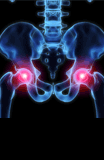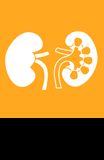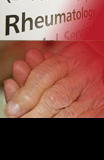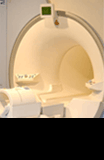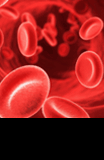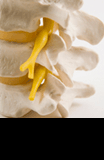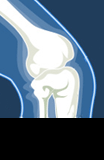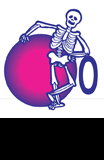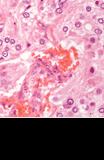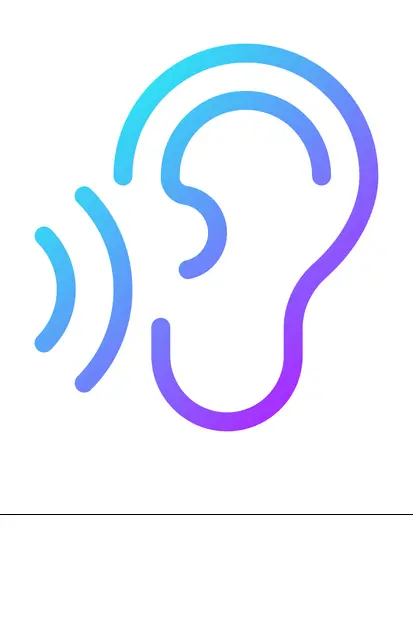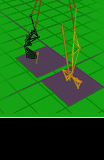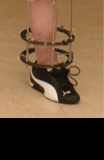OUH agrees long COVID research collaboration with Polarean

Oxford University Hospitals (OUH) and the medical imaging technology company, Polarean Imaging plc, have entered into a research collaboration to study the long-term effects of COVID-19 in patients who are still experiencing breathlessness months after infection.
Polarean produce an investigational drug device combination product using hyperpolarised xenon gas to enhance magnetic resonance imaging (MRI) in pulmonary medicine.
Xenon MRI imaging technology uses a novel approach that can detect functional changes of the lung that impact its ability to properly handle the exchange of gases during inhalation and exhalation. The upcoming research builds upon the pioneering work conducted at OUH showing that hyperpolarised xenon MRI can detect underlying damage that is not detectable by traditional lung imaging, such as CT scans.
The research builds upon the pioneering work conducted at OUH showing that hyperpolarised xenon MRI can detect areas of possible lung damage in patients with long COVID.
Under the terms of the collaboration, Polarean will provide its investigational xenon polariser system to OUH for their research. In turn, OUH will work with Polarean to optimise the imaging workflow and analyse the datasets coming from the newly enrolling EXPLAIN study. Through novel analyses of gas-exchange images, Polarean and OUH hope to better characterise long COVID and improve patient care.
The EXPLAIN study, which also involves teams from Sheffield, Cardiff and Manchester, is supported by the NIHR Oxford Biomedical Research Centre.
Prof Fergus Gleeson, Professor of Radiology at the University of Oxford and Consultant Radiologist at OUH, said: "We are pleased to be working with Polarean, now having access to their most advanced hyperpolarised xenon equipment. With this new system, we will be able to image more patients more efficiently to see if we can uncover the underlying causes driving long COVID as part of our EXPLAIN study."
Richard Hullihen, CEO of Polarean, said: "Oxford University is a leading pioneer in the use of Xe MRI to unravel the underlying pathophysiology that drives persistent breathlessness in patients with long COVID. We are delighted to collaborate with them on new image analyses as part of the upcoming EXPLAIN trial that might shed additional light on the mysterious illness that has been affecting a growing number of patients over the past few years and affecting their quality of life."
Long COVID is an umbrella term used to describe ongoing symptoms following COVID-19 infection after four weeks. Symptoms are wide-ranging but breathlessness is one of the most common and can persist for months after the initial infection. Investigations including Computed Tomography (CT) and physiological measurements (lung function tests) can often be unremarkable. The mechanisms driving breathlessness remain unclear, and this may be hindering the development of effective treatments. Therefore, new diagnostic modalities are crucial to advance the care of these patients.
The EXPLAIN study is using hyperpolarised xenon MRI scans to investigate possible lung damage in long COVID patients who have not been hospitalised with COVID-19 but who continue to experience breathlessness.
It is envisaged that 400 participants will be recruited. These include:
- Patients diagnosed with long COVID, who have all been seen in dedicated long COVID clinics and who have normal CT scans
- Participants who have been in hospital with COVID-19 and discharged more than three months previously, who have normal or nearly normal CT scans and who are not experiencing long COVID
- An age- and gender-matched control group who do not have long COVID symptoms and who have not been hospitalised with COVID-19
The findings of an initial pilot study involving 36 people has identified abnormalities in the lungs of long COVID patients who had been experiencing breathlessness.
A polarisation device transforms the inert noble gas, xenon, into a hyperpolarised state using circularly polarised laser light. The hyperpolarised gas is inhaled by a patient to fill the space normally occupied by air in a single 10-second breath hold. The hyperpolarised gas then enhances the MRI signal, making regional lung function, including gas exchange, from the lungs to the blood visible in an MRI scan. The use of xenon MRI is non-invasive, and does not impart any radiation to the patient.




